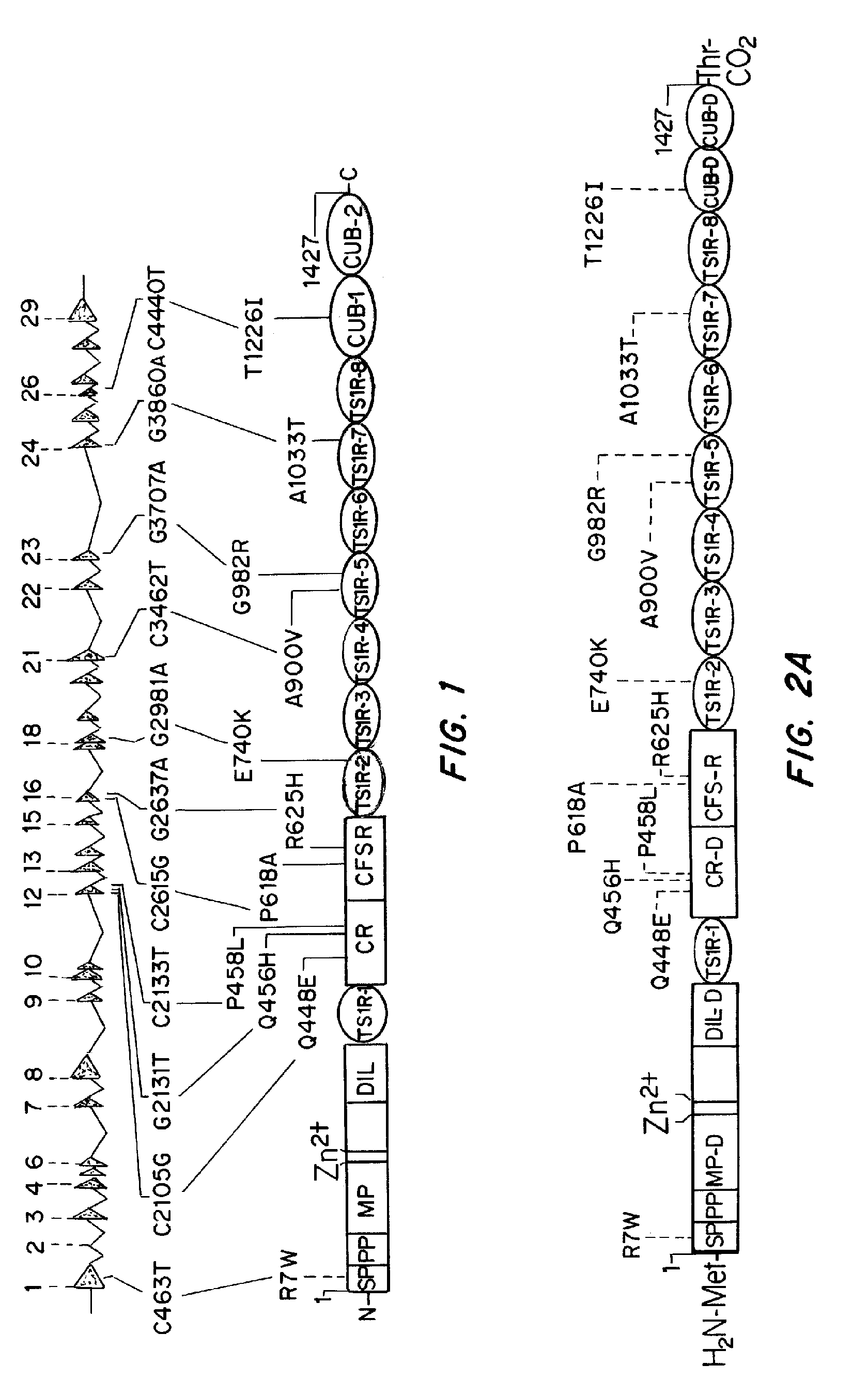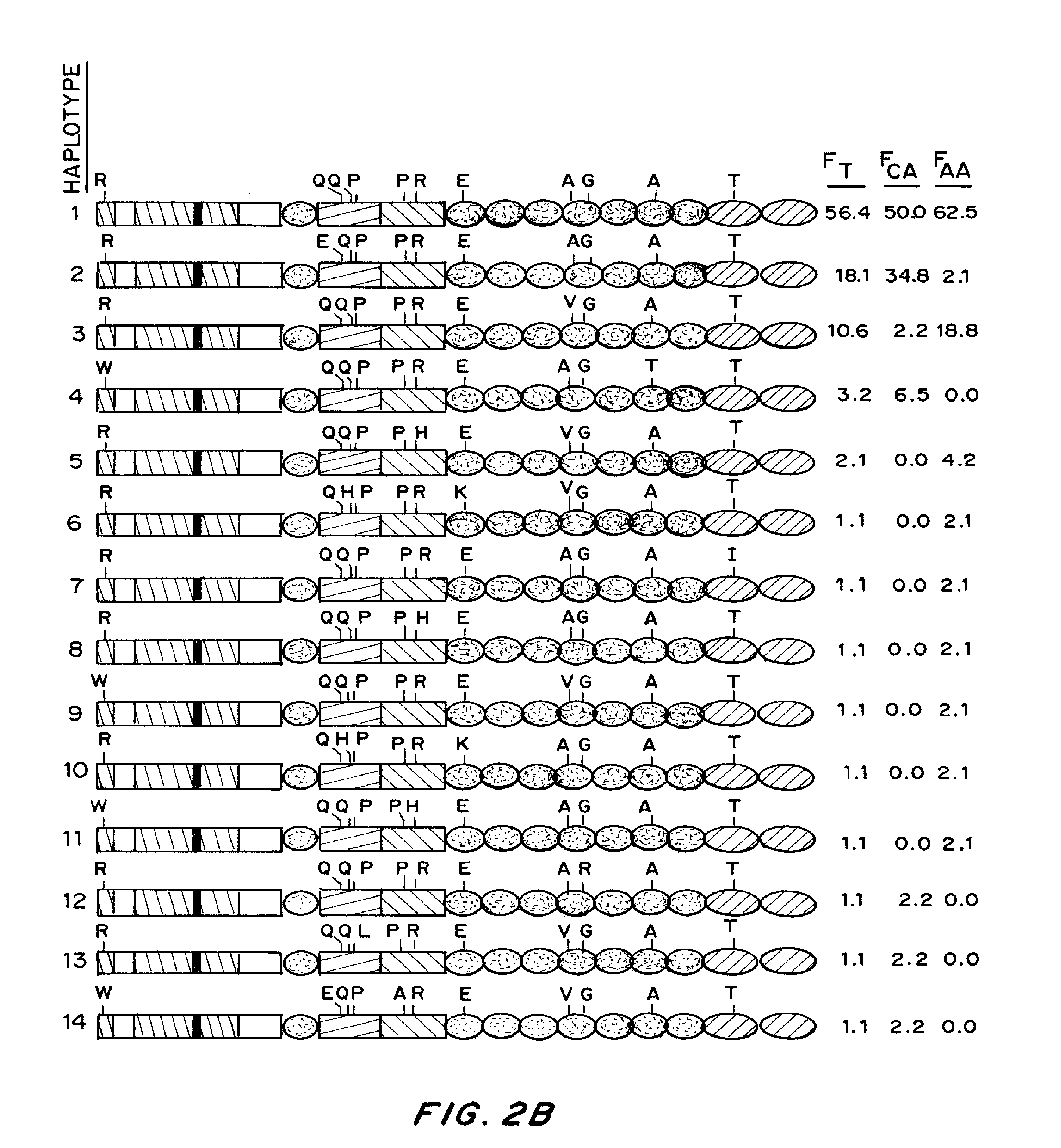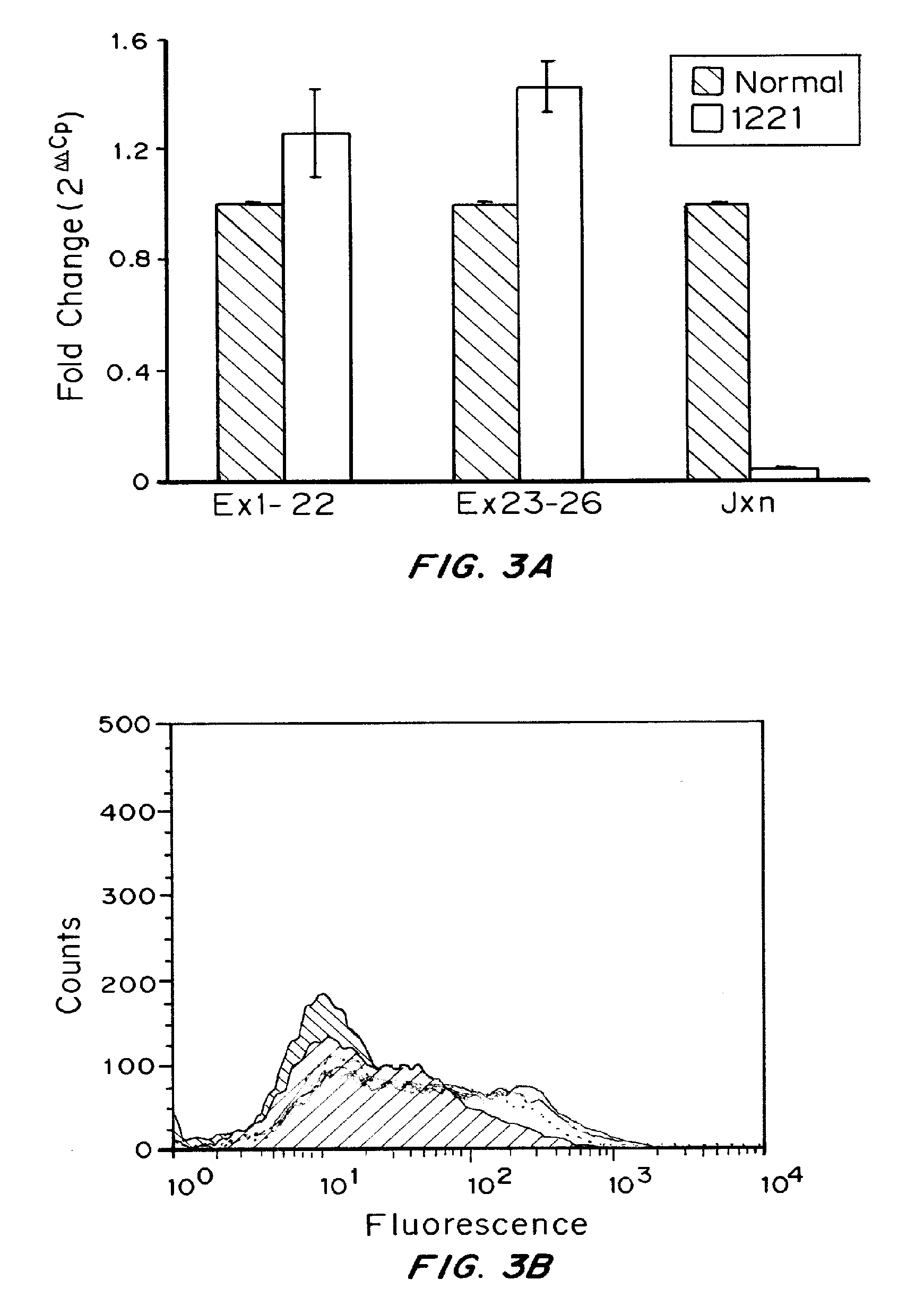Predicting and reducing alloimmunogenicity of protein therapeutics
a protein and alloimmunogenic technology, applied in the direction of immunological disorders, drug compositions, proteomics, etc., can solve the problems of insufficient strategy, inability to accurately predict immunogenicity, widespread ischemia and irreversible organ damage, etc., to reduce the effect of reducing the incidence of alloimmunogenic reactions
- Summary
- Abstract
- Description
- Claims
- Application Information
AI Technical Summary
Problems solved by technology
Method used
Image
Examples
example 1
Factor VIII (FVIII) in Hemophilia A (HA) patients with the Intron-22 Inversion (1221): Implications for FVIII Tolerance and Immunogenicity
[0149]Materials and Methods
[0150]Human subjects and tissue preparation: The lymphoblastoid cells used in this study were derived from a normal individual and a HA patient with the 1221.
[0151]Cell: Human lymphoblastoid cell lines developed from a severe HA patient with the 1221 and a normal control were cultured in RPMI with 10% heat inactivated fetal bovine serum, 1% penicillin-streptomycin, 1% glutamine at 37° C. with humidified 5% CO2 incubator.
[0152]Flow Cytometry: Cells were grown overnight in complete RPMI, harvested, fixed and permeabilized the according to the manufacture's instructions (IntraPrep™, Beckman Coulter, Marseille, France). Unpermeabilized cells were used as control. Monoclonal antibodies against different domains of the human factor VIII were used for labeling. Anti-mouse IgG2a served as negative controls. The primary antibodie...
example 2
Factor VIII (FVIII) Inhibitors and the Intron-22 (122) Inversion (1221): Implications for Immunologic Tolerance and Immunogenicity
[0178]Factor VIII (FVIII) inhibitors occur in approximately 20% of all treated hemophilia A (HA) patients with the prevalence being highest in those that are severely affected. The development of these neutralizing anti-FVIII antibodies is a complex process involving both treatment- and patient-related risk factors, the most striking of which is the structure of the FVIII gene (F8).
[0179]The nature of the F8 mutation causing HA strongly influences the propensity for inhibitor development. Additionally, naturally occurring non-synonymous (ns)-single-nucleotide polymorphisms (SNPs) are found in pre-mutation F8 genes in various populations forming patterns described as haplotypes 1 to 8. Haplotypes 1 and 2 are found in Caucasians and in the majority of African Americans, Chinese, and individuals from other racial groups studied thus far, as well as in the cu...
example 3
Pharmacogenetics and the Immunogenicity of Protein Therapeutics
[0199]Recent studies have demonstrated that T-cell epitopes play an essential role in eliciting ADAs against therapeutic proteins (Barbosa M D, et al. Clin Immunol 118:42-50 (2006). Considerable progress has also been made in the assessment of T-cell epitopes using computational, in vitro and ex vivo methods (De Groot A S, et al. Curr Opin Pharmacol8:620-6 (2008)). Unfortunately, this progress has not translated into accurate predictions of immunogenicity. Using the example of Factor VIII (FVIII) in the treatment of hemophilia A (HA), a pharmacogenetic approach, based on individual patients, is necessary for the accurate prediction of immunogenicity. In other words, in the use of most protein therapeutics, the predicament is not that all patients develop inhibitory antibodies but that some individuals, racial and / or ethnic groups, or other sub-populations have a stronger immunogenic reaction than others. Current strategi...
PUM
| Property | Measurement | Unit |
|---|---|---|
| temperature | aaaaa | aaaaa |
| temperature | aaaaa | aaaaa |
| temperature | aaaaa | aaaaa |
Abstract
Description
Claims
Application Information
 Login to View More
Login to View More - R&D
- Intellectual Property
- Life Sciences
- Materials
- Tech Scout
- Unparalleled Data Quality
- Higher Quality Content
- 60% Fewer Hallucinations
Browse by: Latest US Patents, China's latest patents, Technical Efficacy Thesaurus, Application Domain, Technology Topic, Popular Technical Reports.
© 2025 PatSnap. All rights reserved.Legal|Privacy policy|Modern Slavery Act Transparency Statement|Sitemap|About US| Contact US: help@patsnap.com



